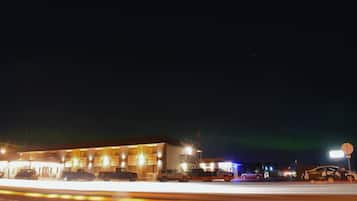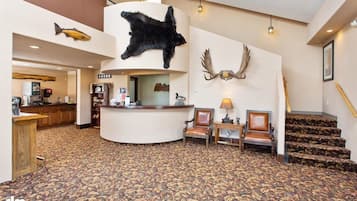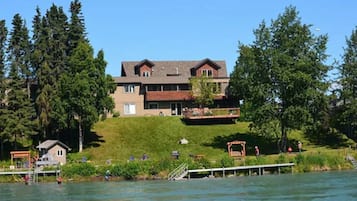Photo by Sharrie Shaw
Find Resorts & Hotels with Spas in Nikiski, AK
- Change your mindBook hotels with free cancellation
- Be pickySearch almost a million properties worldwide
Check availability on Nikiski Resorts & Hotels with Spas
Top Nikiski Resorts & Hotels with Spas
No exact matches found, but these alternatives could be just right
Recommended hotels in Nikiski

Uptown Motel Kenai
Kenai
8.6 out of 10, Excellent, (292)
The price is NT$2,772
NT$2,938 total
includes taxes & fees
Dec 1 - Dec 2

The Hibernation Station
Sterling
9.2 out of 10, Wonderful, (47)
The price is NT$1,963
NT$2,022 total
includes taxes & fees
Dec 12 - Dec 13

Aspen Extended Stay Suites Kenai
Kenai
9.0 out of 10, Wonderful, (702)
The price is NT$3,122
NT$3,309 total
includes taxes & fees
Dec 9 - Dec 10

Kenai Airport Hotel
Kenai
9.2 out of 10, Wonderful, (323)
The price is NT$3,616
NT$3,833 total
includes taxes & fees
Nov 30 - Dec 1

Soldotna Lodge
Soldotna
6.0 out of 10, (37)
The price is NT$2,130
NT$2,194 total
includes taxes & fees
Nov 19 - Nov 20

Soldotna Inn
Soldotna
7.6 out of 10, Good, (525)

Best Western King Salmon Inn
Soldotna
8.2 out of 10, Very Good, (377)
The price is NT$4,177
NT$4,595 total
includes taxes & fees
Nov 22 - Nov 23

Quality Inn Kenai
Kenai
8.4 out of 10, Very Good, (562)
The price is NT$3,677
NT$3,898 total
includes taxes & fees
Dec 3 - Dec 4
Lowest nightly price found within the past 24 hours based on a 1 night stay for 2 adults. Prices and availability subject to change. Additional terms may apply.
Top Nikiski Hotel Reviews
Aspen Hotel Soldotna
10/10 Excellent
Quality Inn Kenai
10/10 Excellent
Explore a world of travel with Expedia
More Hotel Options in Nikiski
Hotels near popular Kenai Attractions
Nikiski Hotels by Star Rating
More ways to book
Expedia's Latest Trends
Hotels
- Mao House
- Forte Hotel Changhua
- Granada Luxury Belek - All Inclusive
- LIHO Hotel - Tainan
- Adults Only Resorts & Hotels in Naples
- Hotels in Tsuen Wan
- Hotels in Pattaya
- Blue Ocean Hotel
- Hotels with an Indoor Pool in Hsinchu
- Hotels near NTU Hospital Station
- Amboseli Serena Safari Lodge
- Phra Singh Village
- Casinos in San Francisco
Flights
- Flights from Taoyuan City (TPE) to Shenzhen (SZX)
- Flights from Taoyuan City (TPE) to Cleveland (BKL)
- Flights from Taoyuan City (TPE) to Toyama (TOY)
- Flights from Kaohsiung (KHH) to Shuishang (CYI)
- Flights from Singapore (SIN) to Tuban (DPS)
- Flights from Taoyuan City (TPE) to Los Angeles (LAX)
- Flights from Taoyuan City (TPE) to Ozora (MMB)
Cars
![The Arctic Circle is one of the five major circles of latitude that mark maps of the Earth. As of 16 February 2015, it runs 66°33′45.6″ north of the Equator.
The region north of this circle is known as the Arctic, and the zone just to the south is called the Northern Temperate Zone. The equivalent polar circle in the Southern Hemisphere is called the Antarctic Circle.
The Arctic Circle is the southernmost latitude in the Northern Hemisphere at which the sun can remain continuously above or below the horizon for 24 hours (at the June solstice and December solstice respectively). North of the Arctic Circle, the sun is above the horizon for 24 continuous hours at least once per year (and therefore visible at midnight) and below the horizon for 24 continuous hours at least once per year (and therefore not visible at noon). On the Arctic Circle those events occur, in principle, exactly once per year, at the June and December solstices, respectively. However, in practice, because of atmospheric refraction and mirages, and because the sun appears as a disk and not a point, part of the midnight sun may be seen on the night of the northern summer solstice up to about 50′ (90 km (56 mi)) south of the Arctic Circle; similarly, on the day of the northern winter solstice, part of the sun may be seen up to about 50′ north of the Arctic Circle. That is true at sea level; those limits increase with elevation above sea level, although in mountainous regions there is often no direct view of the true horizon.
The position of the Arctic Circle is not fixed. It directly depends on the Earth's axial tilt, which fluctuates within a margin of 2° over a 40,000-year period,[2] notably due to tidal forces resulting from the orbit of the Moon. The Arctic Circle is currently drifting northwards at a speed of about 15 m (49 ft) per year; see Circle of latitude for more information.
#snow](https://images.trvl-media.com/place/6140564/a9f9449e-bab4-40a6-a9a1-5356b0cc2aa8.jpg?impolicy=fcrop&w=1200&h=500&q=medium)































